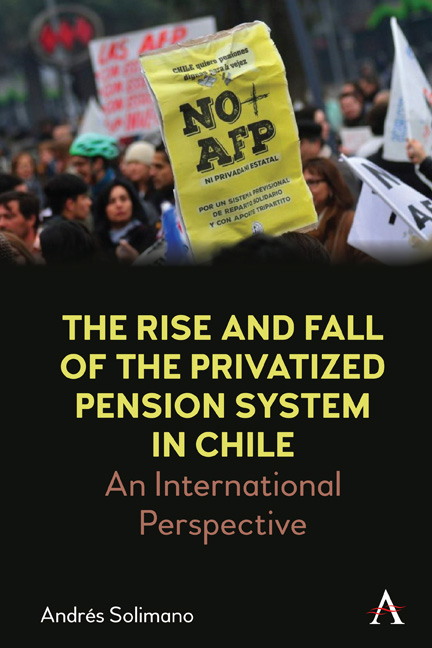Book contents
- Frontmatter
- Contents
- Acknowledgments
- 1 Introduction
- 2 An Overview of Social Security: Purposes, Modalities and Historical Evolution
- 3 The Rise and Fall of Pension Privatization in Latin America and Central and Eastern Europe
- 4 The Evolution of Social Protection and Pension Systems in Chile from the 19th Century until Its Privatization in the 1980s
- 5 Empirical Elements for Evaluating the Privatized Chilean Pension System
- 6 Synthesis and Conclusions: Reform Paralysis and the Road to De-privatization
- References
- Index
2 - An Overview of Social Security: Purposes, Modalities and Historical Evolution
Published online by Cambridge University Press: 24 March 2021
- Frontmatter
- Contents
- Acknowledgments
- 1 Introduction
- 2 An Overview of Social Security: Purposes, Modalities and Historical Evolution
- 3 The Rise and Fall of Pension Privatization in Latin America and Central and Eastern Europe
- 4 The Evolution of Social Protection and Pension Systems in Chile from the 19th Century until Its Privatization in the 1980s
- 5 Empirical Elements for Evaluating the Privatized Chilean Pension System
- 6 Synthesis and Conclusions: Reform Paralysis and the Road to De-privatization
- References
- Index
Summary
Purposes and Modalities
Social security systems develop mechanisms to cope with uncertainties, unexpected shocks and disruptions that affect working people and those who are retired from the workforce. In the economist's jargon, a properly working social security system should help smooth consumption from a variety of adverse shocks and changes in life cycle circumstances. People face risks such as losing their jobs, accidents at the workplace, sickness and disabilities and getting old and therefore turning less suitable to continue an active working life. They may also face the death of the main income earner that creates hardship and eventually leads to family dissolution. The shocks felt at individual and household levels may be associated with macroeconomic and financial crises that create unemployment, bankruptcy of firms and skill mismatches. Other sources of risk are associated with the propagation of pathogens (pandemics) and natural disasters such as earthquakes, floods and hurricanes, climate change, war and armed conflict.
A comprehensive list of relevant risks, whose consequences the mechanisms of social protection and social security try to prevent or compensate, includes:
(i) occupational accidents and sickness,
(ii) disability,
(iii) death of the main income provider or head of household,
(iv) the loss of a job and the entering to the unemployment pool,
(v) old age,
(vi) impact of natural disasters such as earthquakes, floods and hurricanes,
(vi) effects of an armed conflict or wars,
(vii) the effects of a pandemic.
Historically, before the advent of state-sponsored social security to cope with these contingencies, the church, philanthropic organizations, societies of friendship and mutual help and labor unions were important sources of support for those affected by adverse shocks and risks. In general, these mechanisms were funded through member contributions, monetary donations by wealthy families, male and female voluntary work in charitable and solidarity-oriented organizations. The eruption of government-sponsored social insurance was, many times, motivated by the pressure and mobilization of working-class organizations affected by rapid industrialization, technical change that replaced labor for machinery and equipment, the intensification of labor intensity in the factory system through extending working hours, the use of child labor in capitalist production, job losses due to import penetration and outward foreign direct investment.
- Type
- Chapter
- Information
- The Rise and Fall of the Privatized Pension System in ChileAn International Perspective, pp. 13 - 30Publisher: Anthem PressPrint publication year: 2021

